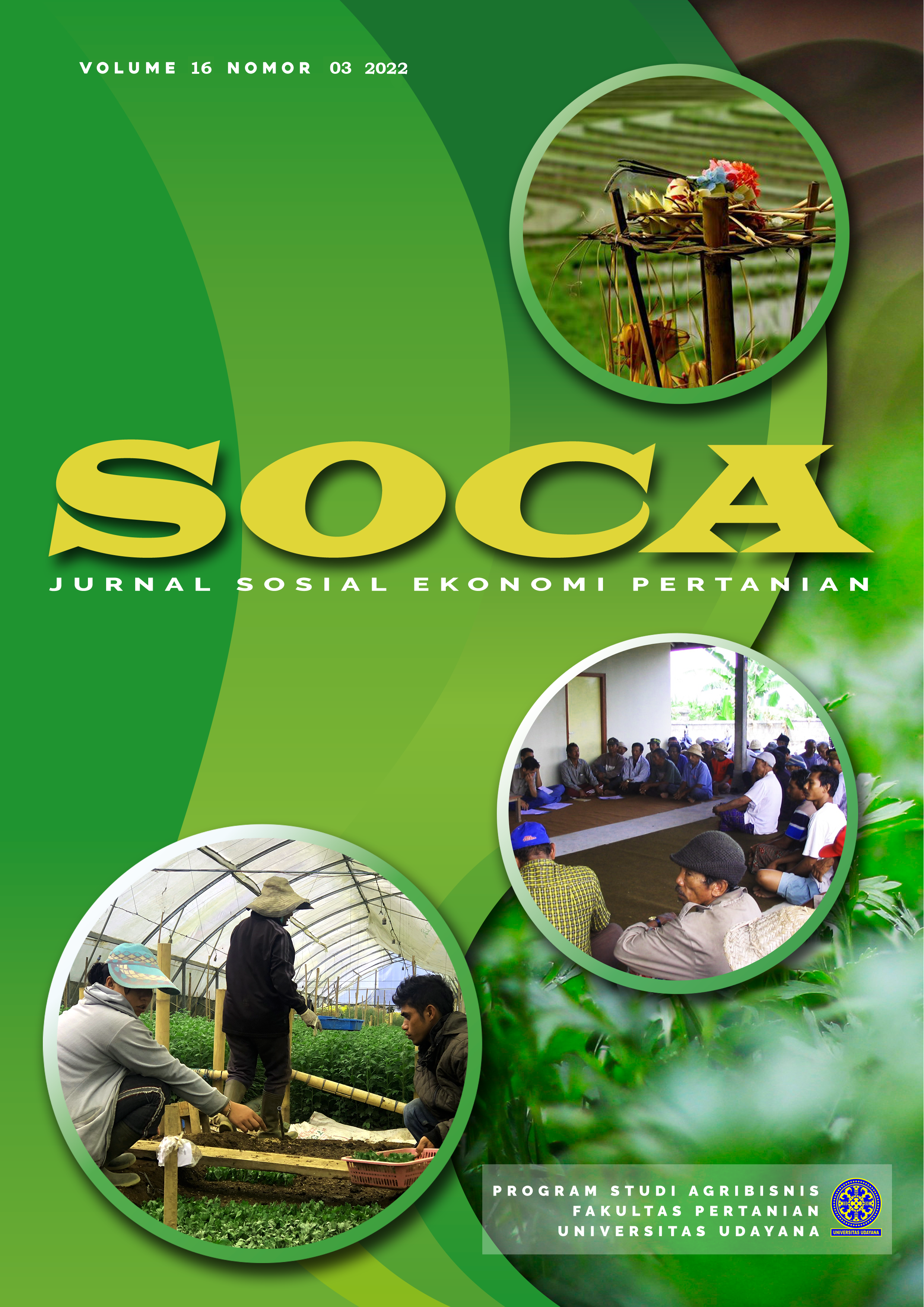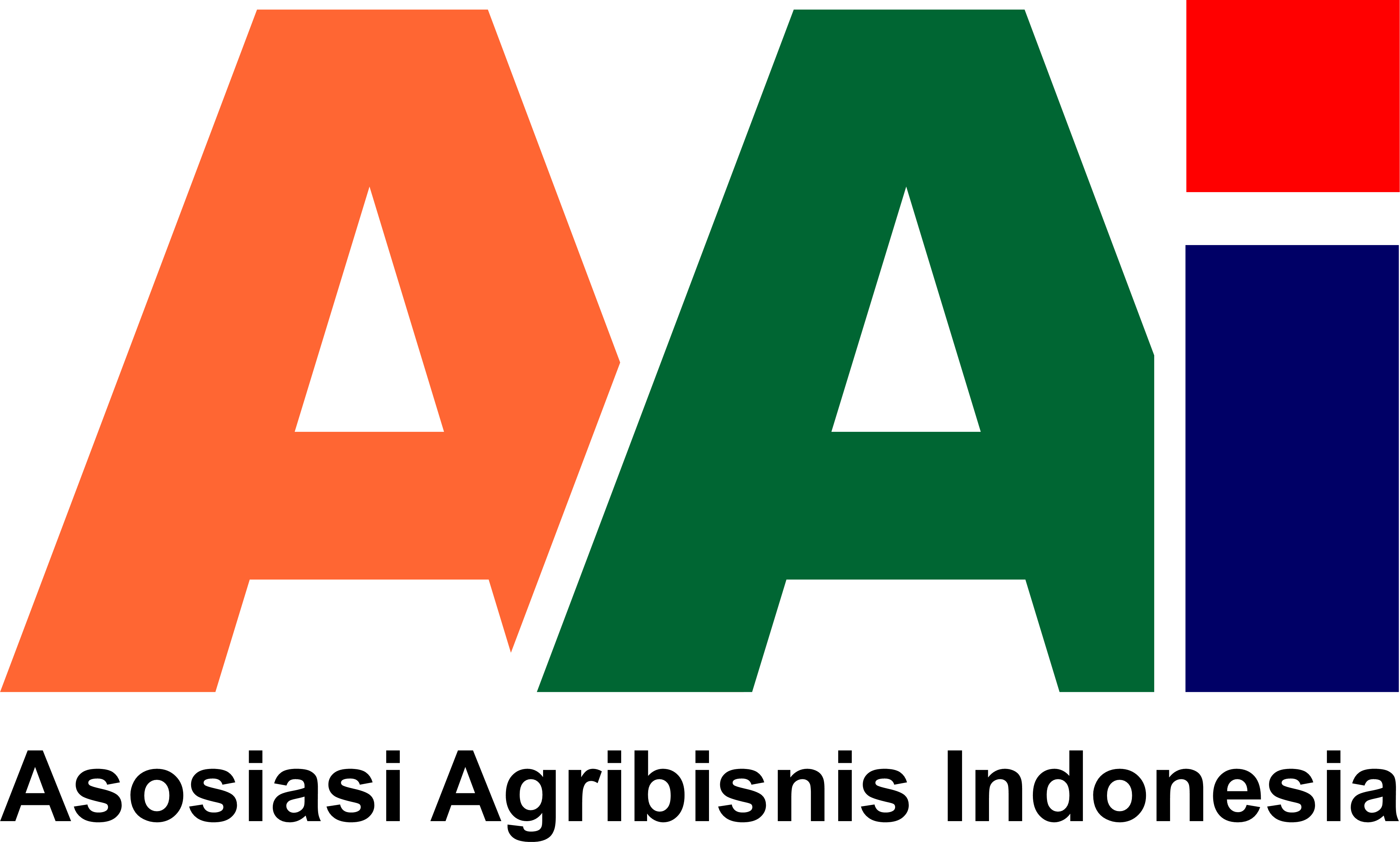Impact of Technology Introduction on Shallot Farming Performance in Central Java
Abstract
Technological improvement, particularly to prevent yield loss, will benefits shallot farmers. Technology packages related to crop protection have been introduced to shallot farmers in three shallot-producing areas namely Brebes, Tegal and Pemalang, Central Java. This study aimed to analyze the effect of technology package introduction on the performance of shallot farming. The analysis is carried out using a difference-in-difference approach which ensures the real impact of the technology. The fundamental analysis is economic threshold theory. A total of 160 samples consisting of 112 adopters and 48 non-adopters in this study were spread over three regions. A simple paired and independent t-tests were applied to the hypotheses. Agricultural performance indicators include productivity, costs of production and net income. The results showed that the performance of shallot farming increased significantly due to technological improvements. The technology packages have been able to increase productivity, reduce costs of production and enhance net income of shallot farming. This result is very important because the reduction of pesticides can improve environmental quality and health
Downloads
References
Ahmed, S. (2012). Agricultural Land Tenancy in Rural Bangladesh: Productivity Impact and Process of Contract Choices. University of Adelaide.
Ali, A., & Sharif, M. (2012). Impact of farmer field schools on adoption of integrated pest management practices among cotton farmers in Pakistan. Journal of the Asia Pacific Economy, 17(3), 498–513. https://doi.org/10.1080/13547860.2012.694706
Atan, R., Alam, M. M., Said, J., & Zamri, M. (2018). The impacts of environmental, social, and governance factors on firm performance: Panel study of Malaysian companies. Management of Environmental Quality: An International Journal, 29(2), 182–194. https://doi.org/10.1108/MEQ-03-2017-0033
Athipanyakul, T., & Pak-uthai, W. (2012). Determinants of Good Agricultural Practices (GAP) Adoption in the Chili Production System in Northeastern Thailand: A Case of Participatory Approach.
Berg, H, & Tam, N. T. (2012). Use of pesticides and attitude to pest management strategies among rice and rice-fish farmers intheMekong Delta, Vietnam. International Journal of Pest Management, 58(2), 153–164. https://doi.org/10.1080/09670874.2012.672776
BPS. (2020). Indonesia Year Book. Jakarta.
BPS. (2021). Statistics of Horticulture 2021 (R. Setiawati & T. H. Marpaung (eds.)). BPS RI/BPS-Statistics Indonesia.
Budiasa, I. W. (2010). Analisis Ambang Ekonomi dalam Pengelolaan Hama Terpadu Untuk Diversifikasi Insdustri Berbasis Tebu. SOCA: Jurnal Sosial Ekonomi Pertanian, 10(2), 128–133.
Coventry, D. R., Poswal, R. S., Yadav, A., Zhou, Y., Riar, A., Kumar, A., Sharma, R. K., Chhokar, R. S., Gupta, R. K., Mehta, A. K., Chand, R., Denton, M. D., & Cummins, J. A. (2018). A novel framework for identifying the interactions between biophysical and social components of an agricultural system: a guide for improving wheat production in Haryana, NW India. The Journal of Agricultural Education and Extension, 24(3), 263–284. https://doi.org/10.1080/1389224X.2018.1435420
David, S., & Asamoah, C. (2011). The Impact of Farmer Field Schools on Human and Social Capital: A Case Study from Ghana. The Journal of Agricultural Education and Extension, 17(3), 239–252. https://doi.org/10.1080/1389224X.2011.559076
Deb, U., Pramanik, S., Patan, E., & Bantilan, C. (2016). Tenancy and Agricultural Productivity in Southern India: Nature, Extent, Trends and Determinants. Journal Of Rural Development, 35, 435–464.
Dewi, H. A., Daroini, P. B., Ndaru, R., Negoro, A. A., & Latifah, E. (2021). Analysis of agribusiness performance of top five vegetable farming in East Java. IOP Conf. Series: Earth and Environmental Science 892 (2021) 012003, 1–8. https://doi.org/10.1088/1755-1315/892/1/012003
Dong, H., Campbell, B., & Rabinowitz, A. N. (2019). Factors impacting producer marketing through community supported agriculture. PLOS ONE, 14(7), e0219498. https://doi.org/10.1371/journal.pone.0219498
Elizabeth, R., & Hendayana, R. (2005). Peran Dan Peluang SL-PHT Komoditi Lada Mempengaruhi Kognitif Petani Perkebunan Rakyat (Studi kasus: Propinsi Lampung). SOCA: Jurnal Sosial Ekonomi Pertanian, 5(2), 38–49. https://ojs.unud.ac.id/index.php/soca/article/view/4087
Fang, S., Ji, X., Ji, X., & Wu, J. (2018). Sustainable urbanization performance evaluation and benchmarking: An efficiency perspective. Management of Environmental Quality: An International Journal, 29(2), 240–254. https://doi.org/10.1108/MEQ-07-2017-0063
Feder, G., & Savastano, S. (2017). Modern agricultural technology adoption in sub-Saharan Africa: Four country analysis. In P. Pingali & G. Feder (Eds.), Agriculture and Rural Development in a Globalizing World: Challenges and Opportunities (pp. 11–25). Eartscan from Routlegde.
Gautam, S., Schreinemachers, P., Uddin, M. N., & Srinivasan, R. (2017). Impact of training vegetable farmers in Bangladesh in integrated pest management (IPM). Crop Protection, 102, 161–169. https://doi.org/https://doi.org/10.1016/j.cropro.2017.08.022
Gertler, P. J., Martinez, S., Premand, P., Rawlings, L. B., Vermeersch, & J., C. M. (2016). Impact Evaluation in Practice, Second Edition. World Bank and IDB.
Iqbal, M. (2016). Relationship Between Farmers’ Participation And Empowerment In The Coffee IPM-SECP In East Java Province. SOCA: Jurnal Sosial Ekonomi Pertanian, 16(2), 21–30. https://ojs.unud.ac.id/index.php/soca/article/view/4129
Jayasooriya, H. J. C., & Aheeyar, M. M. M. (2016). Adoption and Factors Affecting on Adoption of Integrated Pest Management among Vegetable Farmers in Sri Lanka. Procedia Food Science, 6, 208–212. https://doi.org/https://doi.org/10.1016/j.profoo.2016.02.052
Mariyono, J. (2007). The impact of IPM training on farmers’ subjective estimates of economic thresholds for soybean pests in central Java, Indonesia. International Journal of Pest Management, 53(2), 83–87. https://doi.org/10.1080/09670870601119106
Mariyono, J. (2016). Integrated disease management for chili farming in Brebes and Magelang - Central Java: Social economic impacts. Agriekonomika, 5(2), 114–124. https://doi.org/10.21107/agriekonomika.v5i2.1686
Mariyono, J. (2019). Farmer training to simultaneously increase productivity of soybean and rice in Indonesia. International Journal of Productivity and Performance Management, 68(6), 1120–1140. https://doi.org/10.1108/IJPPM-10-2018-0367
Mariyono, J., Abdurrachman, H., Suswati, E., Susilawati, A. D., Sujarwo, M., Waskito, J., Suwandi, & Zainudin, A. (2020). Rural modernisation through intensive vegetable farming agribusiness in Indonesia. Rural Society, 29(2), 116–133. https://doi.org/10.1080/10371656.2020.1787621
Norton, G. W., Alwang, J., & Issa, M. S. (2016). Impacts of IPM on vegetable production in the tropics. In R. Muniappan & E. A. Heinrichs (Eds.), Integrated Pest Management of Tropical Vegetable Crops (pp. 289–304). Springer Netherlands. https://doi.org/10.1007/978-94-024-0924-6_14
Raut, N., Sitaula, B. K., Vatn, A., & Paudel, G. S. (2011). Determinants of adoption and extent of agricultural intensification in the central mid-hills of Nepal. Journal of Sustainable Development, 4(4), 47–60.
Riar, A., Mandloi, L. S., Poswal, R. S., Messmer, M. M., & Bhullar, G. S. (2017). A Diagnosis of Biophysical and Socio-Economic Factors Influencing Farmers’ Choice to Adopt Organic or Conventional Farming Systems for Cotton Production . In Frontiers in Plant Science (Vol. 8, p. 1289). https://www.frontiersin.org/article/10.3389/fpls.2017.01289
Saeed, M. F., Shaheen, M., Ahmad, I., Zakir, A., Nadeem, M., Chishti, A. A., Shahid, M., Bakhsh, K., & Damalas, C. A. (2017). Pesticide exposure in the local community of Vehari District in Pakistan: An assessment of knowledge and residues in human blood. Science of The Total Environment, 587–588, 137–144. https://doi.org/https://doi.org/10.1016/j.scitotenv.2017.02.086
StataCorp. (2013). Stata: Release 13 Statistical Software. College Station, StataCorp.
Supriatna, A. (2006). Penerapan Teknologi Pengendalian Hama Terpadu (Pht) Pada Perkebunan Rakyat Jambu Mete (Studi Kasus Petani Jambu Mete di Propinsi Nusa Tenggara Barat). SOCA: Jurnal Sosial Ekonomi Pertanian, 6(1), 11–20. https://ojs.unud.ac.id/index.php/soca/article/view/4114
Supriatna, A., & Sadiin, I. (2004). Kinerja Pengendalian Hama Padi Sawah Pasca Introduksi Teknologi Pengendalian Hama Terpadu. SOCA: Jurnal Sosial Ekonomi Pertanian, 4(1), 1–10. https://ojs.unud.ac.id/index.php/soca/article/view/4034
Susanti, H., Budiraharjo, K., & Handayani, M. (2018). Analisis Pengaruh Faktor-Faktor Produksi Terhadap Produksi Usahatani Bawang Merah Di Kecamatan Wanasari Kabupaten Brebes. Agrisocionomics: Jurnal Sosial Ekonomi Pertanian, 2(1), 23–30. https://doi.org/10.14710/agrisocionomics.v2i1.2673
Suswati, E., Agustin, N. K., & Mariyono, J. (2006). Adverse Health Impacts of Pesticide Use on Indonesian Rice Production: An Economic Analysis. SOCA: Jurnal Sosial Ekonomi Pertanian; Vol. 6, No. 2 Juli 2006, 6(2), 1–10. https://ojs.unud.ac.id/index.php/soca/article/view/4143
van den Berg, Henk, Phillips, S., Dicke, M., & Fredrix, M. (2020). Impacts of farmer field schools in the human, social, natural and financial domain: a qualitative review. Food Security, 12(6), 1443–1459. https://doi.org/10.1007/s12571-020-01046-7
Williamson, S., Ball, A., & Pretty, J. (2008). Trends in pesticide use and drivers for safer pest management in four African countries. Crop Protection, 27(10), 1327–1334. https://doi.org/https://doi.org/10.1016/j.cropro.2008.04.006













